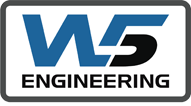Testing in the packaging industry is crucial for ensuring that packaging not only meets legal standards but also supports product quality throughout its lifecycle. Deciding between establishing an in-house laboratory and test equipment rental is a major strategic choice for companies, influencing not just cost structures but also the speed and innovation of packaging solutions.
In-house laboratories offer complete control and facilitate immediate adaptations in testing processes, which is vital for industries facing rapid technological changes or stringent regulatory updates. Renting equipment, on the other hand, provides flexibility and cost savings, especially beneficial for smaller enterprises or those in the initial stages of product development.


